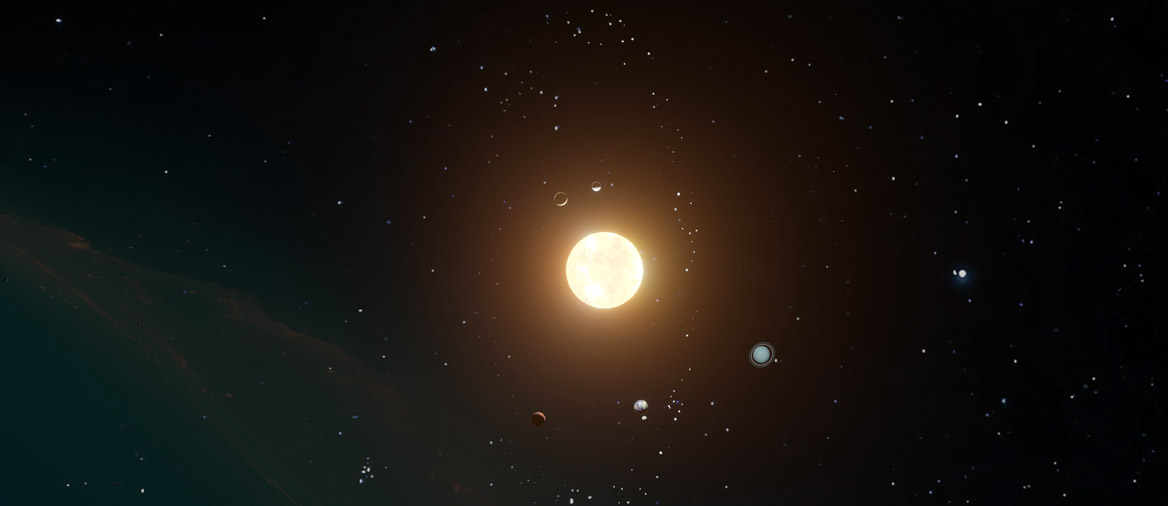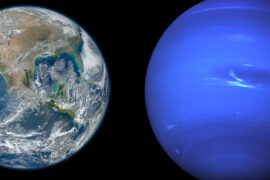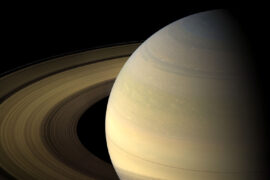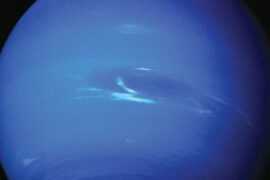Astronomers have a metric called apparent magnitude to measure the brightness of an object in the sky. This measurement is relative to how the object – a star, a planet, etcetera – looks like from Earth. That means that even if an object is not too bright, it can have a large magnitude if it is close to use. The perfect example of this is the Moon, which has a magnitude of -12.9 during a full moon, making it much brighter than Sirius, the brightest star in the night sky which has a magnitude of -1.4 (less magnitude means the object appears brighter).
“That’s cool. But what does it have to do with the title question?” – you might be asking.
Well, it is important because our eyes have a maximum magnitude they can reach without help from a telescope or other optic devices. This magnitude is around 4 in large cities and 7 in areas that have close to zero light pollution.
Each of the planets in the Solar system has its own magnitude which you can find in the table below.
| Planet | Apparent magnitude |
|---|---|
| Mercury | 0.23 |
| Venus | -4.1 |
| Earth | |
| Mars | -2.9 |
| Jupiter | -2.2 |
| Saturn | -0.55 |
| Uranus | 5.7 |
| Neptune | 7.7 |
As you can see from the table above. This means that the planets up to Saturn can be observed by the naked eye with ease.
That means that ancient people going all the way back to cavemen were able to see the planets in the sky, even if they didn’t know what they were, making it very difficult to say who discovered the planets as they weren’t “found” by a single person.
This is not the case for Neptune and Uranus, which most of the time are beyond the limit that can be seen by the eye. These two planets were discovered after the invention of the telescope and they do have an official discoverer.
Who discovered Mercury, Venus, Mars, Jupiter and Saturn?
Mercury, Venus, Mars, Jupiter, and Saturn were not discovered by a single person. Since they can be seen by the naked eye, people have been able to observe them since ancient times.
However, we do know that the Greeks were the ones who figured out that these objects moved differently than the stars and it was they who named them planetes, which means “wanderers”.
Later, the Romans named them individually after their equivalents to Greek mythological deities. Mars was named after the god of war, Venus after the goddess of beauty, and so on. These are the same names that we use today.
Who discovered Uranus?
The discovery of Uranus is attributed to the German-British astronomer Sir William Herschel who observed the planet on 13 March 1781. Herschell first reported it as a comet, but soon enough the astronomy community realized it was actually a planet.
If you looked at the table of magnitudes above, you might have noticed that Uranus is right on the edge of being luminous enough to be able to be seen with just our eyes. This is why it is believed that the earliest recorded observation of Uranus was made by the Greek astronomer Hipparcus in 128 BC but he cataloged it as a star.
Other astronomers had also previously made observations of Uranus, but they hadn’t realized that it was a planet and instead classified it as a star. Uranus even appears in one of the most popular star atlas, the Flamsteed catalog as part of the Taurus constellation.
As the first planet discovered in modern times, there was a discussion amongst astronomers about how it should be named. In the end, it was decided that the best way to go about it was to stick to using the names of Greek gods and it was named after the deity of the sky. However, Uranus breaks the tradition of using the Roman equivalent of the name which is Caelus.
Who discovered Neptune?
The discovery of Neptune is attributed to the astronomers Urbain Le Verrier and Johann Gottfried Galle. Le Verrier predicted the existence and general position of the planet using math to explain certain discrepancies that had been noted in the orbit of Uranus.
On September 23, 1846, Johann Gottfried Galle finally discovered Neptune at Berlin’s observatory, confirming the calculation that Le Verrier had made.
There are records that Neptune had been already observed by other astronomers such as Galileo Galilei, Jérôme Lalande, and John Herschel (son of William Herschel, who discovered Uranus) in previous centuries. However, none of them recognized that they were looking at an undiscovered planet.
Le Verrier tried to name the planet after himself, however, the astronomy community outside of France disagreed with the idea and instead decided to adopt the name Neptune after the Roman equivalent of Poseidon, the Greek god of the sea, thus using the same naming convention as all the other planets except Uranus.
Summary
- We don’t know who discovered the five planets that are visible without a telescope. Mercury, Venus, Mars, Jupiter, and Saturn. They have been observed since ancient times.
- Uranus was discovered by Sir William Herschell in 1781
- Neptune was discovered by Urbain Le Verrier and Johann Gottfried Galle in 1846







